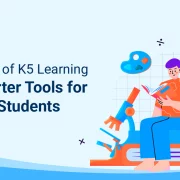
Why Does AI Outperforms Manual Proofreading in Manuscript Checking?
Summary
This blog examines AI versus human proofreading, focusing on accuracy, speed, and context, and suggests combining both for optimal manuscript quality.
A recent study highlighted just how revolutionary AI can be in the publishing world. It examined AI’s impact on chatbot development and introduced an innovative AI-driven peer review process to enhance the quality and efficiency of manuscript review. Using machine learning, the AI provided valuable feedback and suggestions on scientific manuscripts. It further delivered insights that boosted the speed and accuracy of reviews.
The study’s findings point to a promising future in which AI can refine editorial tasks and elevate manuscript quality, thus making the review process more accessible and effective.
This shift raises an intriguing question for editors and publishers: Can AI in manuscript checking truly replace or outperform traditional proofreading?
Let’s find out by exploring the benefits, limitations, and transformative potential of AI proofreading.
Table of Contents:
- Why AI in Manuscript Checking is Gaining Popularity?
- AI in Manuscript Checking: Is it Truly Beneficial?
- Comparing AI with Manual Proofreading in Manuscript Checking
- The Bottom Line
Why AI in Manuscript Checking is Gaining Popularity?
The growing reliance on AI-powered tools for manuscript checking can be attributed to a few key reasons:
1. Increased Demand for Speed and Efficiency
Editors today face tight deadlines and high volumes of submissions. AI helps streamline manuscript proofreading by automating repetitive checks and flagging errors quickly. Consequently, editors are able to handle more reviews in less time while maintaining high standards without sacrificing speed.
2. Enhanced Consistency in Quality
AI in manuscript checking provides a consistent level of accuracy that minimizes the risk of overlooked errors. It standardizes processes like manuscript language editing to make sure that all content meets the same editorial quality, even when dealing with multiple manuscripts and diverse author backgrounds.
3. Cost-Effectiveness for Publishers
AI is cost-effective, especially compared to traditional manuscript proofreading services. Moreover, AI-powered solutions automate substantial parts of the review and reduce dependency on human resources.
Money saved means it can be allocated in other places, for example, to expand the publishing initiatives.
4. Growing Trust in AI’s Analytical Capabilities
We cannot ignore the fact that AI technology has become more sophisticated. Therefore, its capabilities in tasks like manuscript editing services have also grown. Publishers and editors are increasingly confident in AI’s ability to understand context, recognize stylistic nuances, adapt to varying editorial guidelines, etc.
All these reasons have contributed to making AI an invaluable tool for ensuring polished and impactful manuscripts.
Also Read: Learn How AI Proofreading Software Enhances Business Capabilities
AI in Manuscript Checking: Is it Truly Beneficial?
AI in education, AI in healthcare, AI in publishing—a lot is going on with AI. It seems like AI is the tool that fits everywhere, but can it really work effectively in every field?
When it comes to AI in manuscript checking, the advantages are certainly compelling. Faster turnaround times mean editors can process more manuscripts in less time and handle high submission volumes. AI also offers consistent quality, catching errors and enforcing standards without the fatigue or variability of human proofreading.
Still not convinced?
AI excels at identifying complex linguistic issues that are often missed in traditional proofreading. Here’s what it includes:
- Spotting inconsistent terminology or phrasing across a manuscript.
- Addressing redundancy and verbosity, pinpointing repetitive words or phrases that can weaken the impact of the content.
- Detecting awkward syntax and sentence structure and recommending corrections for convoluted sentence constructions.
- Identifying subtle errors in tone and style to maintain a professional tone throughout the manuscript.
Comparing AI with Manual Proofreading in Manuscript Checking
As AI becomes a staple in manuscript proofreading and manuscript editing services, understanding its differences from human-based proofreading is key. Each approach has unique strengths and limitations, and editors must recognize when to rely on one or the other, or ideally, a combination of both.
To help editors and publishers make well-informed decisions, we’re drawing a comparison between AI and manual manuscript checking based on three specific criteria.
1. Accuracy and Consistency
AI in manuscript checking excels in maintaining a consistent level of accuracy, especially for tasks like grammar, punctuation, syntax checks, etc. It can quickly identify patterns and enforce consistency to reduce the chance of missed errors.
Human editors, however, bring an understanding of subtle context, tone, and style, which are essential for nuanced corrections. For example, human expertise is crucial when the manuscript has complex language or literary elements that AI-driven tools may misinterpret.
2. Speed and Efficiency
AI processes text significantly faster than humans, which makes it ideal for high-volume manuscript proofreading services. AI tools can review large sections within minutes and flag common issues with impressive speed.
Yet, manual proofreading, while slower, allows for deeper critical thinking. Critical thinking is especially necessary for manuscripts that require subjective assessments, like evaluating argument strength or narrative flow.
We suggest a balanced approach that might involve using AI for initial checks to catch basic errors and then having human editors refine language and content for depth and cohesion.
3. Contextual Understanding
While AI-powered proofreading tools are advancing, they still struggle with understanding cultural references, idioms, tone adjustments, and more. All these aspects can impact the clarity and readability of the text.
Human editors bring cultural awareness and experience in manuscript language editing. For this reason, manual proofreading is better suited for projects that demand careful consideration of the audience’s perspective.
Also Read: 5 Essential Tips for Effective Proofreading in Academic Settings
The Bottom Line
For manuscript editing services looking to optimize both quality and efficiency, balancing AI tools with human expertise is often the best approach. AI is ideal for the early stages of proofreading and handling repetitive and basic error-checking tasks. Once the initial AI review is complete, human editors can take over, refining the text, adjusting style and tone, and addressing any complex or subjective issues.
In cases of academic or literary manuscripts, where complex language and conceptual depth are crucial, human editors should take the lead, using AI as a complementary tool. Conversely, for technical or highly standardized texts, AI-powered tools can handle the bulk of the review, with only a final human check for quality assurance.
Hurix Digital provides expert editorial services that elevate your content through precise editing, proofreading, and content development. We make sure your materials are clear, accurate, and polished, no matter the format.
Talk to our experts to know more!

Vice President – Digital Content Transformation. He is PMP, CSM, and CPACC certified and has 20+ years of experience in Project Management, Delivery Management, and managing the Offshore Development Centre (ODC).







